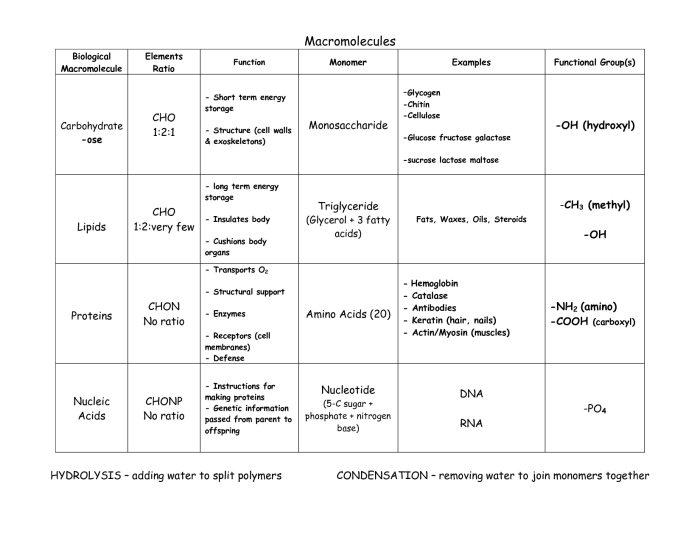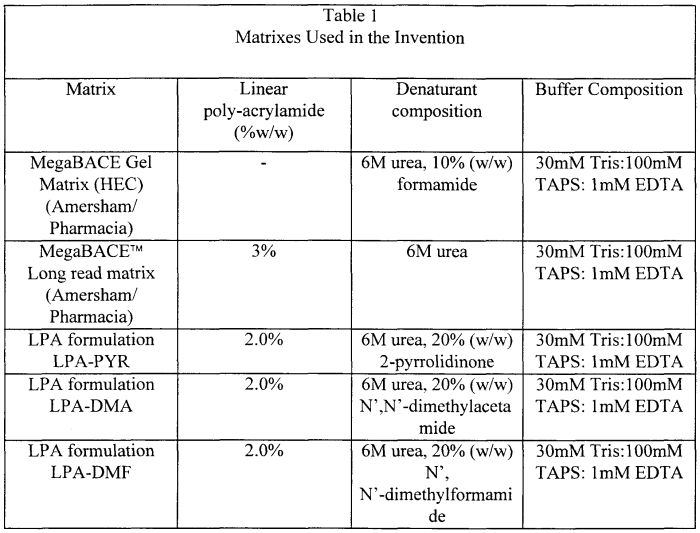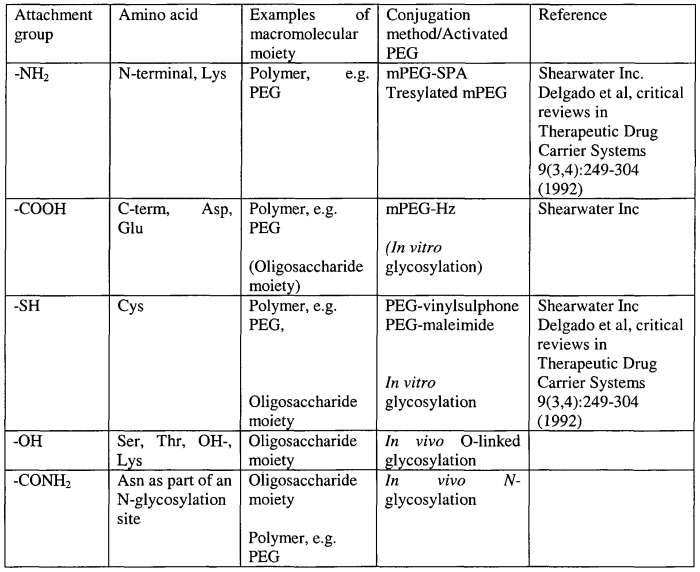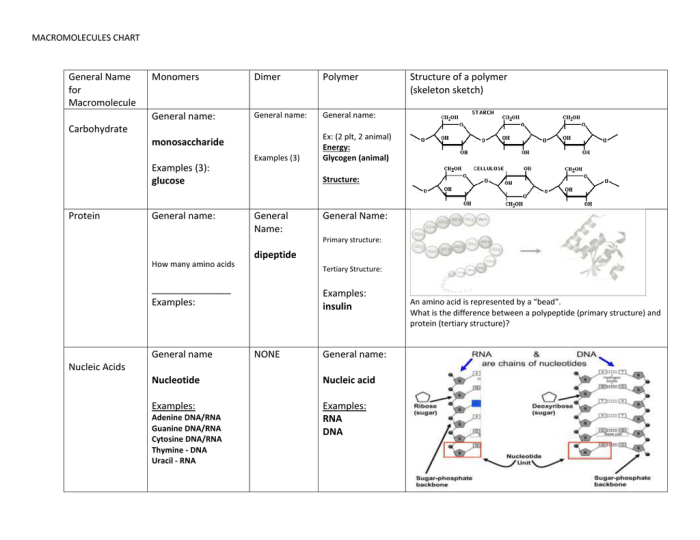Embark on a scientific expedition with our macromolecule comparison table answer key pdf, an indispensable guide to deciphering the intricate world of these biological behemoths. Delving into their molecular architecture, diverse functions, and dynamic interactions, this comprehensive resource empowers you to unravel the secrets of life’s building blocks.
Within the depths of this document, you will encounter a meticulously crafted table that unveils the fundamental characteristics of carbohydrates, lipids, proteins, and nucleic acids, the four pillars of macromolecular diversity. Prepare to witness the interplay of structure and function as we explore the molecular underpinnings of biological processes.
Macromolecule Overview: Macromolecule Comparison Table Answer Key Pdf

Macromolecules are large, complex molecules that are essential for life. They are composed of repeating units called monomers, which are linked together by covalent bonds. The four main types of macromolecules are carbohydrates, lipids, proteins, and nucleic acids.
Carbohydrates are the body’s main source of energy. They are composed of carbon, hydrogen, and oxygen atoms, and they can be classified as either simple or complex. Simple carbohydrates, such as glucose and fructose, are made up of one or two sugar units.
Complex carbohydrates, such as starch and cellulose, are made up of many sugar units.
Lipids are a diverse group of molecules that include fats, oils, and waxes. They are composed of carbon, hydrogen, and oxygen atoms, and they are insoluble in water. Lipids are used for energy storage, insulation, and waterproofing.
Proteins are the building blocks of cells. They are composed of amino acids, which are linked together by peptide bonds. Proteins have a wide range of functions, including enzyme catalysis, structural support, and cell signaling.
Nucleic acids are the molecules that store genetic information. They are composed of nucleotides, which are linked together by phosphodiester bonds. The two main types of nucleic acids are DNA and RNA.
Structural Comparison of Macromolecules

| Macromolecule | Molecular Structure | Monomers | Functions |
|---|---|---|---|
| Carbohydrates | Linear or branched chains of sugar units | Monosaccharides (e.g., glucose, fructose) | Energy storage, structural support |
| Lipids | Fatty acids and glycerol | Fatty acids (e.g., palmitic acid, oleic acid) | Energy storage, insulation, waterproofing |
| Proteins | Polypeptide chains | Amino acids (e.g., alanine, glycine) | Enzyme catalysis, structural support, cell signaling |
| Nucleic Acids | Polynucleotide chains | Nucleotides (e.g., adenine, thymine) | Genetic information storage |
Functional Comparison of Macromolecules

- Carbohydrates: Energy storage
- Lipids: Membrane formation, energy storage
- Proteins: Enzyme catalysis, structural support
- Nucleic Acids: Genetic information storage
Macromolecules interact with each other in a variety of ways to form complex biological structures. For example, proteins and lipids interact to form cell membranes, and proteins and nucleic acids interact to form chromosomes.
Macromolecule Analysis Techniques

- Electrophoresis: Separates macromolecules based on their size and charge
- Chromatography: Separates macromolecules based on their affinity for different solvents
- Spectroscopy: Analyzes the absorption or emission of light by macromolecules
FAQ Explained
What is the significance of macromolecules in biological systems?
Macromolecules are the workhorses of life, performing a vast array of essential functions that sustain biological processes. They provide energy, form cellular structures, catalyze reactions, and store genetic information, making them indispensable for the proper functioning of all living organisms.
How does the structure of a macromolecule influence its function?
The structure of a macromolecule is intricately linked to its function. The specific arrangement of atoms and molecular components determines the molecule’s shape, charge, and chemical properties, which in turn dictate its ability to interact with other molecules and perform specific tasks within the cell.